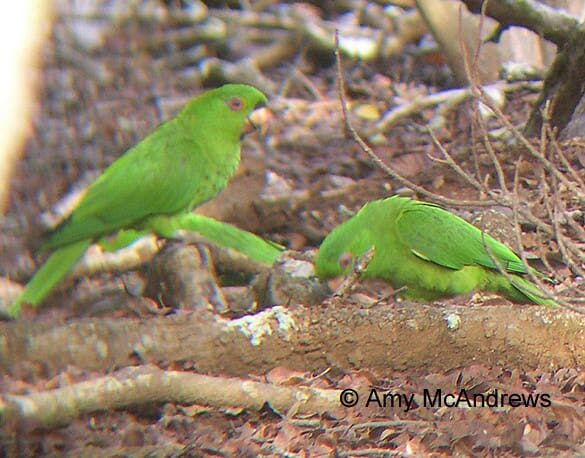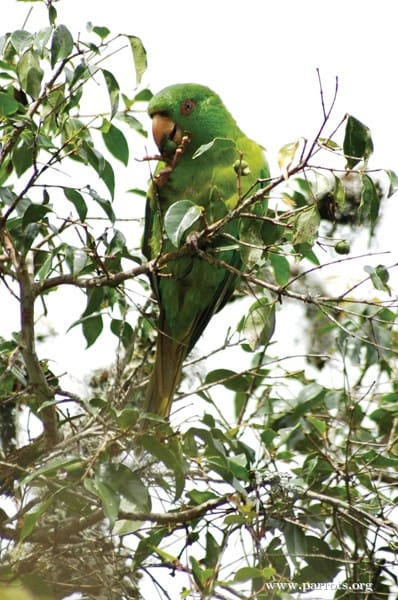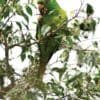Socorro Conure
Also known as:
Socorro Parakeet, Socorro Green Conure
Also known as:
Socorro Parakeet, Socorro Green Conure
DID YOU KNOW?
Gene research from 2013 and 2017 showed that Psittacara brevipes should be treated as a distinct species from P. holochlorus.

Psittacara

brevipes
Size:
32 cm (12.5 in)
Weight:
Not recorded.
Subspecies including nominate:
one
Colour Adult:
Both adults in general green; occasionally a couple of orange/red feathers on neck; blue tinge to primary coverts and outer webs of flight feathers; yellow/green underwing coverts; dull yellow undersides of flight feathers. Beak horn in colour. Eye ring bare and purple/brown.
Colour Juvenile:
Undescribed, but thought to be as in adults.
Call:
In flight calls are high-pitched screeching or piping; while perched, shrill screaming. Also persistent, short notes. Flock calls are shrill and chirping.
More Information:
Content Sources:
Cornell Lab of Ornithology/Birds of the World
A Guide to Parrots of the World, Juniper and Parr, 1998
Parrots of the World, Forshaw and Cooper 2010 edition
Parrots: Status Survey and Conservation Plan 2000-2004, Snyder, McGowan, Gilardi, Grajal, 2000.
Parrots of the World, Forshaw and Knight, 2006.
Captive Status:
Not found in captivity.
Longevity:
—
Housing:
—
Diet:
—
Enrichment:
—
Nest Box Size:
—
Clutch Size:
Not recorded.
Fledging Age:
—
Hatch Weight:
—
Peak Weight:
—
Weaning Weight:
—
World Population:
About 300.
IUCN Red List Status:
Least Concern
CITES Listing:
Appendix II
As congener of Psittacara holochlorus.
As congener of Psittacara holochlorus.
Threat Summary:
A BirdLife “restricted-range” species, endemic to Socorro Island off the Pacific coast of Mexico. Soil erosion and overgrazing by livestock have prevented regeneration of forest. Surveys in 2006 and 2007 estimated a population of about 300 individuals, confirming a recent decline. Predation by feral cats and defoliating swarms of locust have probably had some effect.
Range:
Restricted to Socorro Island in Islas Revillagigedo, west coast of Mexico.
Habitat:
Found up to 500 m (1640 ft) in Bumelia, Ilex and Guettarda forest with trees 8m (26.2 ft) or more, tall.
Wild Diet:
Feeds on Bumelia, Guettarda, Ilex and Psidium seeds and fruit pulp. Also feeds on Opuntia and Ficus fruits in the dry season.
Ecology and Behaviour:
Found in flocks up to 40 birds, more rarely to 100. Seen more commonly in groups or families of 6 or pairs while breeding.
Clutch and Egg Size:
Clutch size unknown, rounded eggs, 30.0 x 24.5 mm (1.2 x 0.9 in).
Breeding Season:
October-January. Nest is in tree hollow.


![© Amy McAndrews [CC BY-NC-ND 2.0] via Flickr Wild Socorro Conures forage on the ground](https://gt2024.parrots.org/wp-content/uploads/2023/01/wpt_Socorro-Conure_1311-1-e1730754745997-100x100.jpg)
